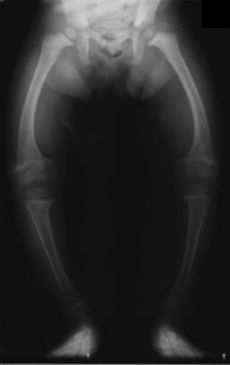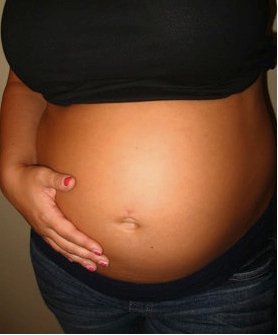10 interesting Vitamin D deficiency causes
Some interesting Vitamin D Deficiency causes are coming to light as increasing research reveals just how valuable Vitamin D is to our health.
But there are some questions arising too, as what level defines deficiency? Across the globe there are variances.
Vitamin D is not known internationally as "the sunshine vitamin" without reason.
The lack of sufficient exposure to the sun's UVB rays is more readily accepted globally now as research looks into so many ways the sun and Vitamin D are able to improve people's health issues, from relatively mild health disorders to serious life threatening ones.
Discovering whether you are Vit D deficient has therefore become a lot more serious in the medical world.
But it's not all as easy as that, as it is in fact quite complex, as there are so many possible causes.
Extracted from a reports by health organizations in the UK and the USA, I have chosen 10 interesting points I believe highlight vitamin D deficiency causes.
UK Joint statement on Vitamin D deficiency causes
A statement was issued jointly by the following organizations in the UK on Vitamin D deficiency causes:
- Cancer Research UK
- The British Association of Dermatologists
- Diabetes UK
- Multiple Sclerosis Society
- National Heart Forum
- National Osteoporosis Society
- Primary Care Dermatology Society
This substantial statement is remarkable in itself in that this collection of reputable health organizations has acknowledged the importance of stating publicly how vital Vitamin D is for human health.
The fact that they may be criticized by many for being too conservative is countered by the fact that there was comparative silence from their counterparts elsewhere in the world.
Top 10 vitamin D deficiency causes:
 A Classic Vitamin D deficiency cause is staying indoors
A Classic Vitamin D deficiency cause is staying indoorsThe following are 10 Vitamin D deficiency causes I found most interesting in this report:
- The report states that "the best way to obtain your vitamin D is by UVB sunlight falling on unexposed skin in doses that do not cause sunburn". The reverse of this implies no sunlight on your skin will cause a deficiency.
- Darker skinned people require a much longer time in the sun for their skin to absorb Vitamin D. Without this extended exposure a deficiency may be caused.
- Obesity may cause a deficiency by Vitamin D being absorbed by the fat tissue and not allowing uptake into the blood stream.
- As we get older, our ability to absorb Vitamin D becomes impaired. Thus the elderly are more at risk for a deficiency in Vitamin D and perhaps explains to me why they tend to love sitting in the sun as often as possible?
- People who wear whole-body covering clothing everyday and thus have extremely limited exposure to the sun are likely to be Vitamin D deficient.
- Infants born to Vitamin D deficient mothers are at risk of being deficient in Vitamin D, especially if they are exclusively breast fed as they are not likely to obtain any Vitamin D at all through their mother's milk.
- Health institutions that deny anyone access to the sun, are likely to cause a deficiency of Vitamin D in their patients and thereby compromise a healthy recovery.
- Personal sun intolerance conditions that cause a person to avoid the sun will also likely cause a Vitamin D deficiency. A catch 22 surely?
- Living in a geographical area where sunlight is limited or even zero in some months, without any dietary supplements containing Vitamin D or even sun-bed usage, will surely result in a Vitamin D deficiency.
- Lastly, overuse of sunscreen, to the extent that exposure to the sun is seriously limited, will more than likely result in a Vitamin D deficiency. Careful balance is required here - just enough UVB exposure without getting sun burnt.
BUT, what level is defined as Vitamin D deficient?
Besides understanding the vitamin D deficiency causes, the level considered deficient or not is under debate.
The same UK based joint statement believes "there is currently no standard definition of an 'optimal' level of Vit D.
The consensus is that levels of 25(OH)D below 25 nmol/L indicate deficiency. Many have argued that this level is far too conservative", but there is new research challenging that this is OK for healthy people. It is those at risk of deficiency who may need more. Herein lies the conundrum.
Raising the levels of 'deficiency' or "sufficiency" depends on the outcome of research projects that will typically take time.
There is even a case reported whereby a 12-year-old girl called Tyler Attrill, diagnosed with the vitamin D deficiency disease Rickets, was told that her condition could have been caused by using an SPF 50 sunscreen for most of her life and depriving her of the essential vitamin and ultimately causing the bone disease.
See the BBC's video report about this: Sun cream caused vitamin D deficiency'
So, the bottom line is that sunlight exposure is good for you, it's free, and people should seek to expose themselves to the sun's UVB rays, without sunscreen, in order to produce more vitamin D completely naturally.
Just don't overdo it and get sun burnt!
USA Vitamin D deficiency statistics
There is an estimated 40% of people in the USA that are substantially vitamin D deficient, according to published research in July, 2018.
Deficiency is defined in the USA as having a serum vitamin D level, or blood level, below 20 ng/mL (ie. 50 nmol/L).
Just how statistics are obtained is always an interesting aspect to consider, but the following statistics for Vitamin D deficiency causes in the USA had some interesting results:
- 32% of doctors and medical school students are Vitamin D deficient.
- 40% of the U.S.A population is Vitamin D deficient.
- 42% of African American women of childbearing age are deficient in Vitamin D.
- 48% of young girls (9-11 years old) are Vitamin D deficient.
- Up to 60% of all hospital patients are Vitamin D deficient.
- 76% of pregnant mothers are severely Vitamin D deficient, causing widespread vitamin D deficiencies in their unborn children, which predisposes them to type 1 diabetes, arthritis, multiple sclerosis and schizophrenia later in life. 81% of the children born to these mothers were deficient.
- Up to 80% of nursing home patients are Vitamin D deficient.
Vitamin D deficiency levels challenged
 Rickets - a skeletal disorder at risk for Vit D deficiency
Rickets - a skeletal disorder at risk for Vit D deficiencyHarvard Medical School posted an article challenging whether 20 ng/mL is not too high to aim for being out of the deficient zone, where some people even go so far as to say 40 - 60 is the right level to aim for.
So 12,5 ng/mL is concluded to be more likely the correct level for healthy individuals. However, certain people at risk, need to work on getting to a higher level than 20 ng/mL.
People at risk include those with:
- anorexia nervosa
- gastric bypass surgeries
- malabsorption syndromes like celiac sprue
- dark skin
- clothing providing total skin covering, thus absorbing less or no sunlight
- perimenopausal symptoms
- osteopenia (reduced bone density, but not osteoporosis)
- osteoporosis or other skeletal disorders such as Rickets
- pregnancy or lactating
Likewise the following health conditions could actually be caused by a deficiency, so would help to boost Vitamin D levels beyond 20 ng/mL:
- prostate cancer, breast cancer, ovarian cancer, depression, colon cancer and schizophrenia
- type 2 diabetes
- Obesity
- Psoriasis
- Seasonal Affective Disorder (SAD)
- fibromyalgia (muscle weakness, aches and pains)







New! Comments
Have your say... please leave me a comment in the box below.